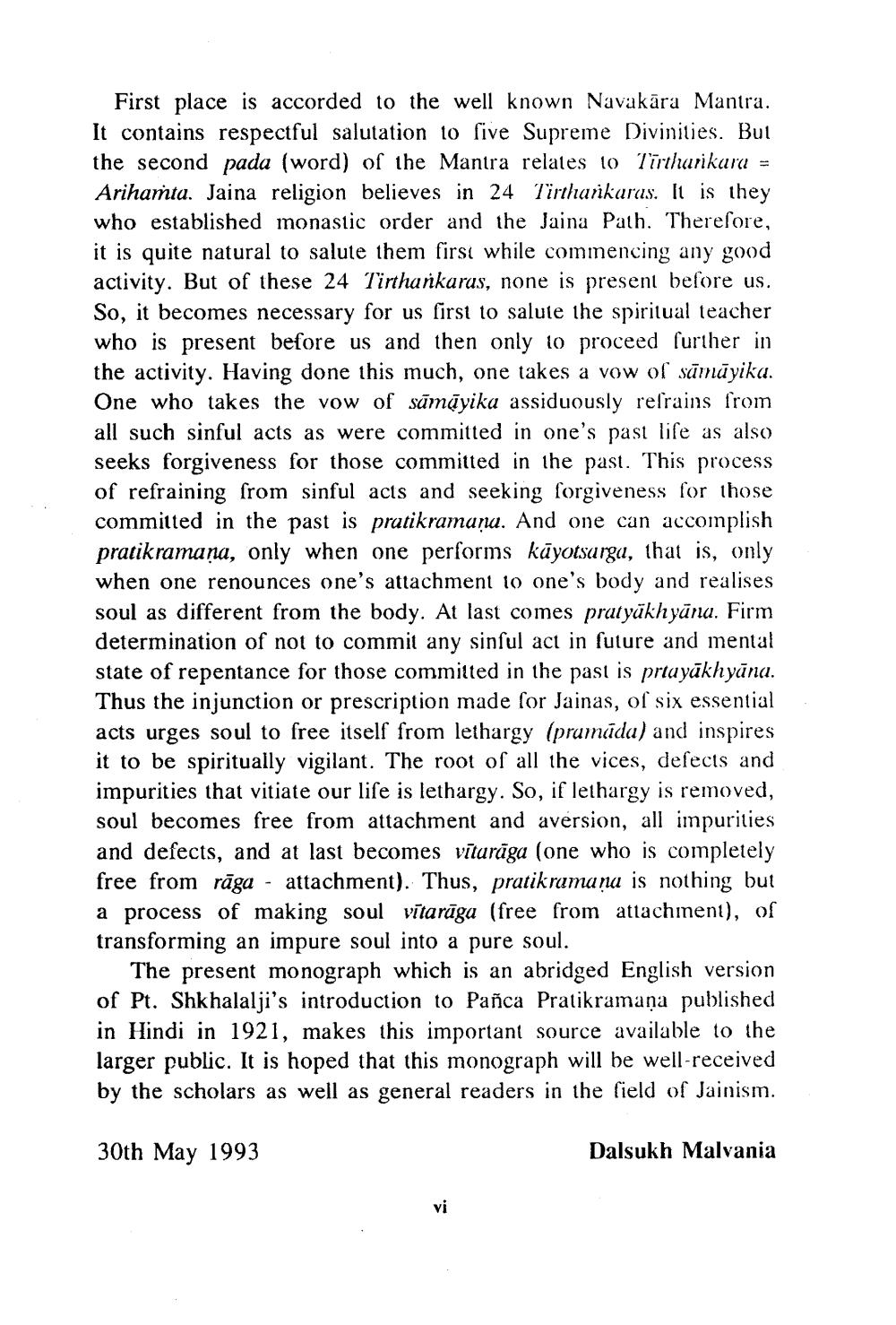________________
First place is accorded to the well known Navakāra Mantra. It contains respectful salutation to live Supreme Divinities. But the second pada (word) of the Mantra relates to Tirtharikara = Arihamta. Jaina religion believes in 24 Tirtharkaras. It is they who established monastic order and the Jaina Path. Therefore, it is quite natural to salute them first while commencing any good activity. But of these 24 Tirthankaras, none is present before us. So, it becomes necessary for us first to salute the spiritual teacher who is present before us and then only to proceed further in the activity. Having done this much, one takes a vow of sāmāyika. One who takes the vow of sāmāyika assiduously refrains from all such sinful acts as were committed in one's past life as also seeks forgiveness for those committed in the past. This process of refraining from sinful acts and seeking forgiveness for those committed in the past is pratikramana. And one can accomplish pratikramana, only when one performs kāyotsarga, that is, only when one renounces one's attachment to one's body and realises soul as different from the body. At last comes pratyükhyāna. Firm determination of not to commit any sinful act in future and mental state of repentance for those committed in the past is prtayākhyāna. Thus the injunction or prescription made for Jainas, of six essential acts urges soul to free itself from lethargy (prumāda) and inspires it to be spiritually vigilant. The root of all the vices, defects and impurities that vitiate our life is lethargy. So, if lethargy is removed, soul becomes free from attachment and aversion, all impurities and defects, and at last becomes vīturāga (one who is completely free from rāga - attachment). Thus, pratikramana is nothing but a process of making soul vītarīga (free from attachment), of transforming an impure soul into a pure soul.
The present monograph which is an abridged English version of Pt. Shkhalalji's introduction to Pañca Pratikramaņa published in Hindi in 1921, makes this important source available to the larger public. It is hoped that this monograph will be well-received by the scholars as well as general readers in the field of Jainism.
30th May 1993
Dalsukh Malvania




